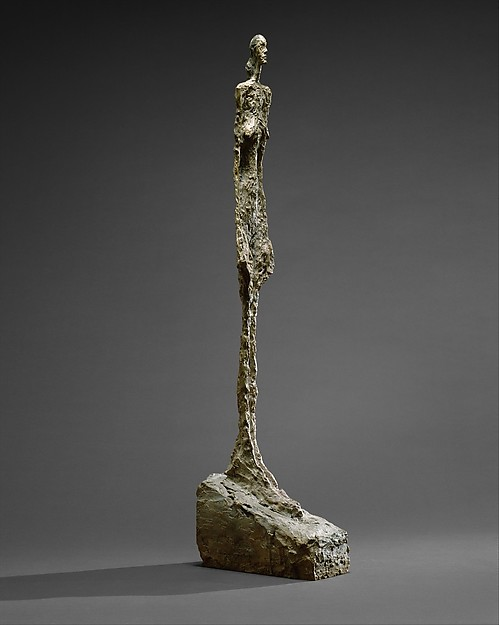I recently visited The Metropolitan Museum of Art and stumbled across this sculpture called “Woman of Venice II” by Alberto Giacometti. It made me recall an experience I had with a patient on the hematology service this past autumn, and I could not help but marvel at how my patient and this work of art seemed to echo each other. Below is my effort at articulating some of the thoughts I had when I saw this sculpture.
****
I gaze upon the sculpture before me, and what I see is defiance. As I approach the halfway point of my intern year, her gaunt frame instantly triggers a subconscious clinical evaluation, as differential diagnoses quickly form in my mind. But above all else, I see defiance. Defiance in the face of disease, disease of every kind—natural disaster, political injustice, artistic censorship, vicious genocide. These external evils stand alongside enemies that spring from within, enemies with hard-sounding names—Crohn’s, cholangitis, cancer, and perhaps the most fittingly titled of all, “consumption,” as the devastating mycobacterium tuberculosis was known to consume the victim from inside out. Yet against such deadly forces, this is a woman who stands tall, impossibly tall, her physicality stretched to its absolute limits in the face of such horrors, emphasizing her frail frame yet at the same time exaggerating her power and emboldening her presence.
My mind wanders to a patient I helped take care of recently, an 89-year-old woman who had once been a prisoner at Auschwitz. She was suffering from complications stemming from advanced cancer and Clostridium difficile colitis. Like the harsh C’s of the very illnesses she bore, she was chillingly cachectic—thin, emaciated, and wasting away before my eyes. Yet she also held her head high. During my ritual morning physical exam, her silence was our strength as my stethoscope eavesdropped on the horrors brewing in her lungs. She would smile weakly as my exam continued, my fingertips gingerly pressed against her belly, “appreciating” her strikingly distended abdomen. She would summon a quiet chuckle as she told me about her “overnight events,” ranging from a rare night of restful sleep to, more often than not, intractable diarrhea, incessant itching, and insufferable pain, sometimes all at once. She would stop mid-sentence and stare out the window, lost in her view of the New York City skyline. She would shake her head while recounting her many childhood stories and she would ask, “where were we?” She would, but after passing away on a cold autumn morning, she never will again.
My patient’s steadfast courage reminds me of the woman in this sculpture, how she stands in a way that somehow reduces her to mere shreds yet also imbues her with towering command. Isn’t this how we wish all our terminally ill patients felt? Standing tall in the face of ravaging illness, mind over matter?
In the sculpture before me, her feet arise from the cold clay, anchored or escaping, I cannot tell which, as if to say to us, “that from which we came is to which we return.” We all flicker for our brief time in this world, trying our best to shine bright before all turns back to black, before our vital elements are reduced to the cold earth from which we sprang. But let her brief moment of strength be fixed for eternity, this woman in her grace facing the horrors of the world with a moment of defiant beauty and intransigent pride, an inspiration to all those who have the fortune of locking eyes with her unrelenting stare. Defiance. Yes, what I see is not the wasting away of a once-healthy human body and spirit, but defiance, defiance burning bright amidst the heavy shadow of innumerable evils.
Dr. Amar Parikh is a 1st year resident at NYU Langone Medical Center.
Image Courtesy of The Metropolitan Museum of Art – The Collection Online
References
1. Giacometti, Alberto. Woman of Venice II. http://www.metmuseum.org/collection/the-collection-online/search/489981 Accessed December 18, 2014.

